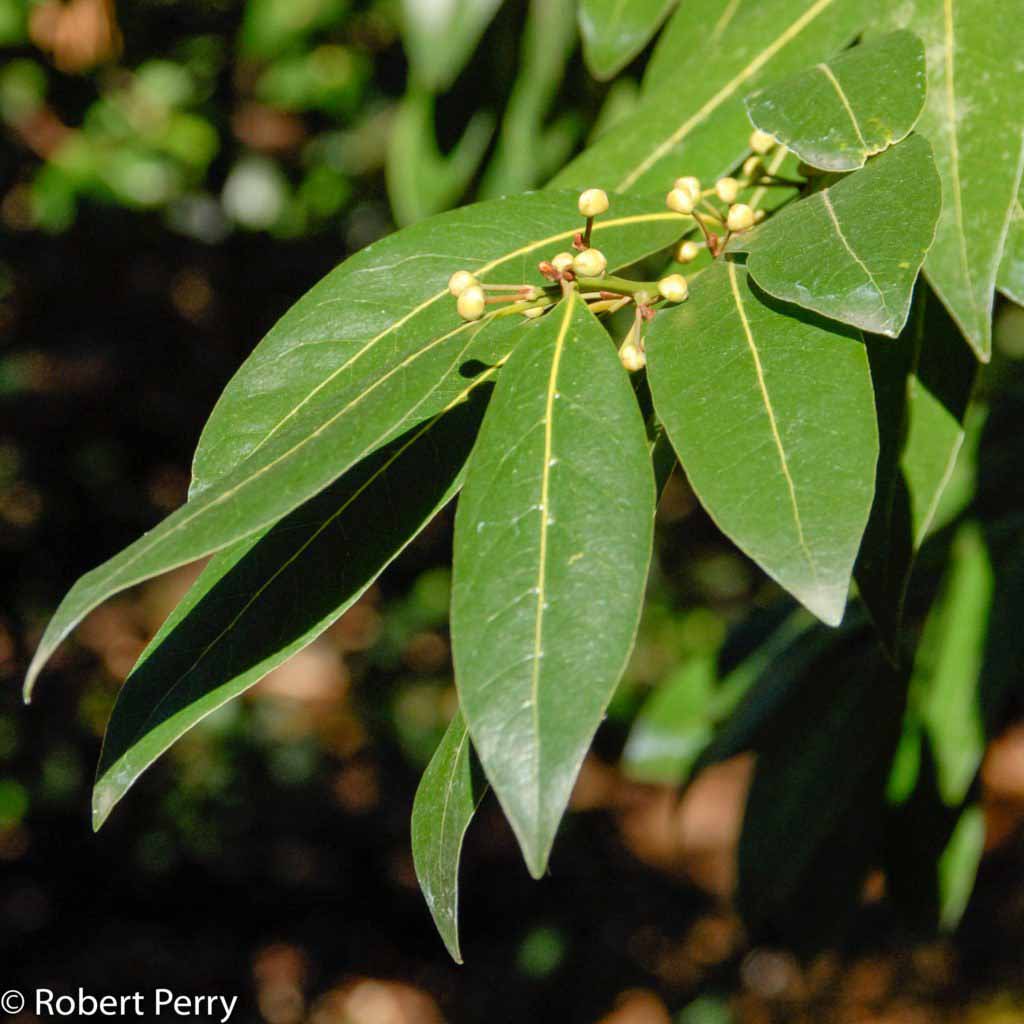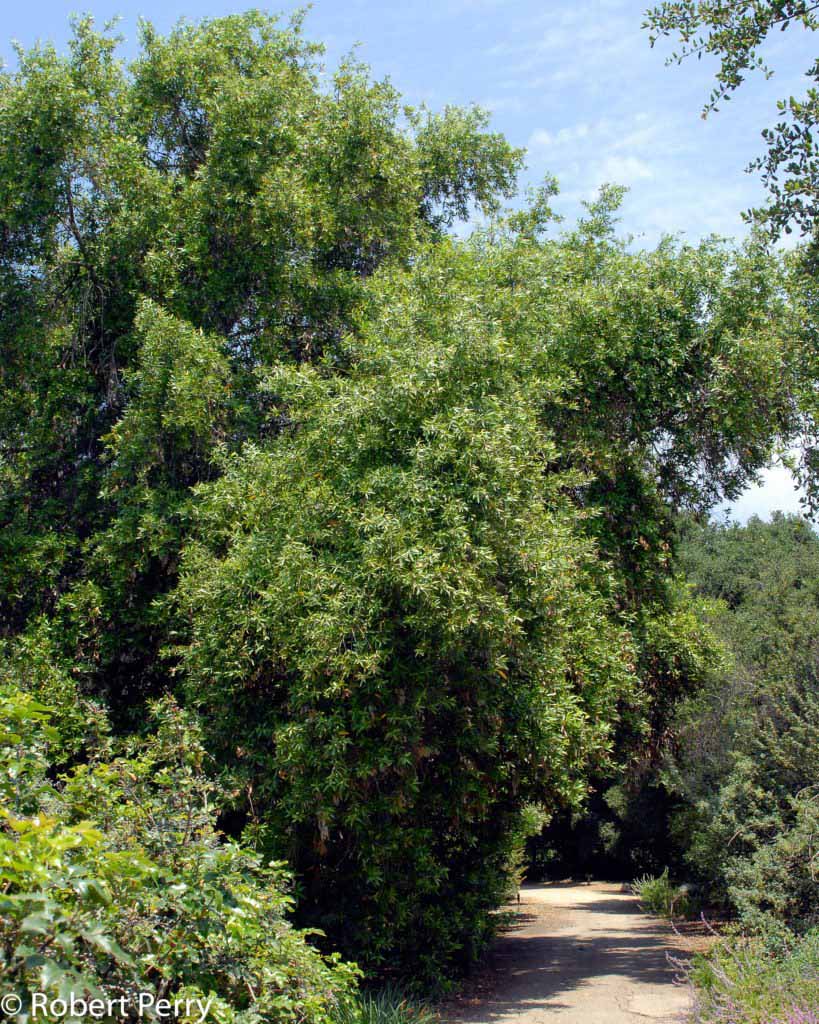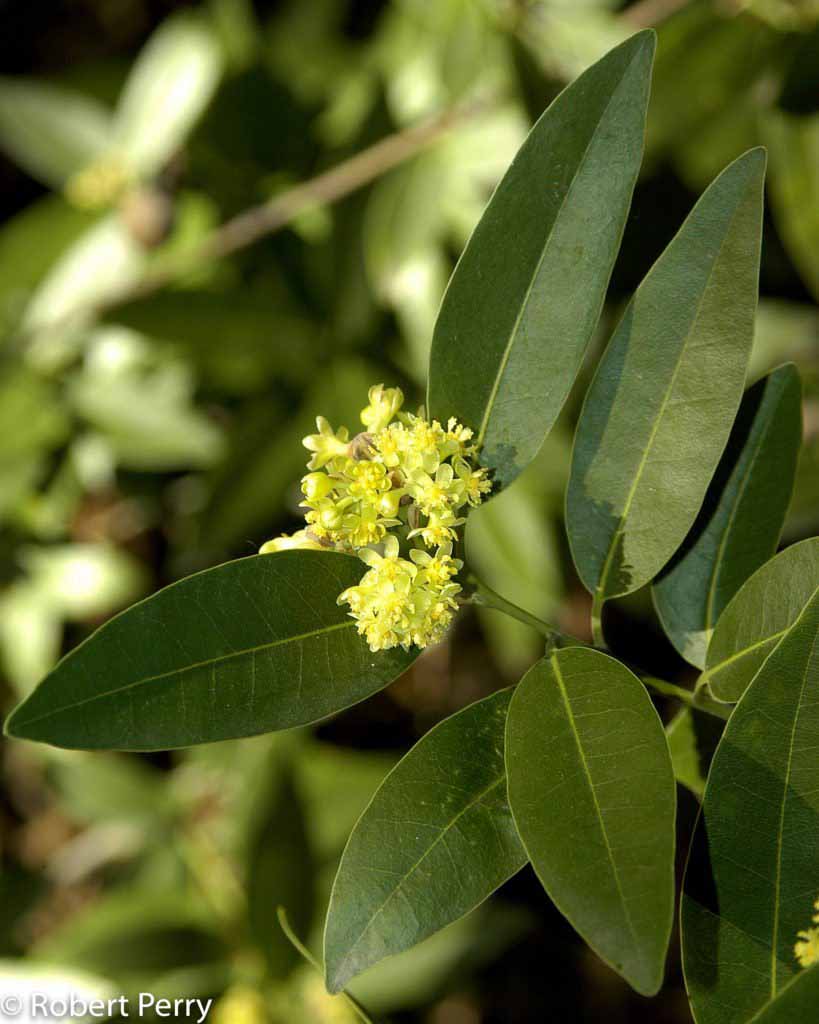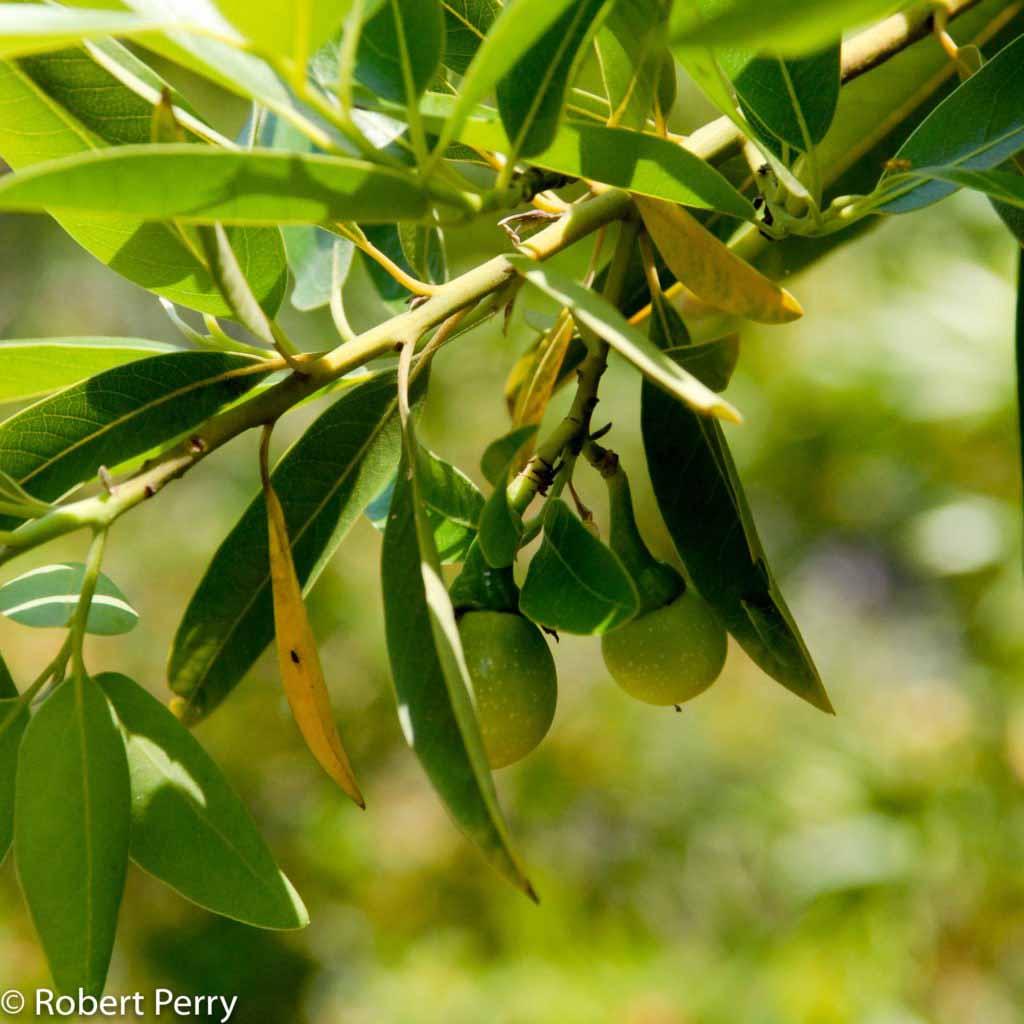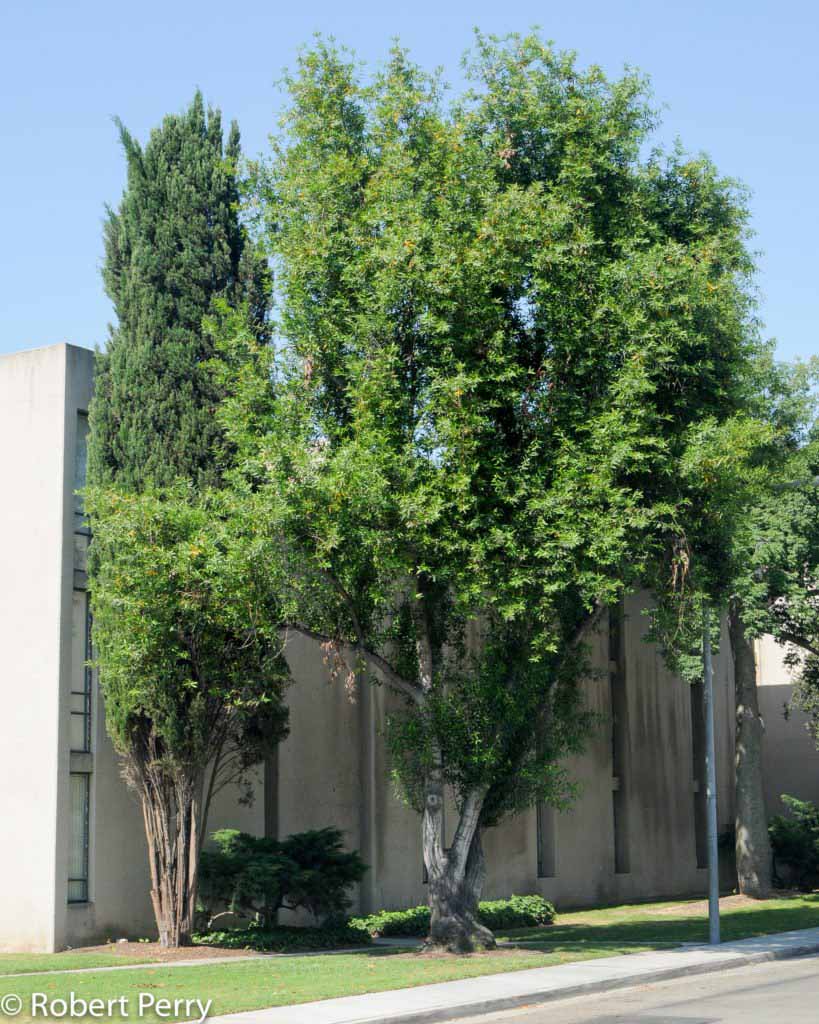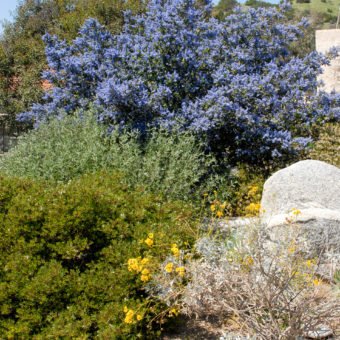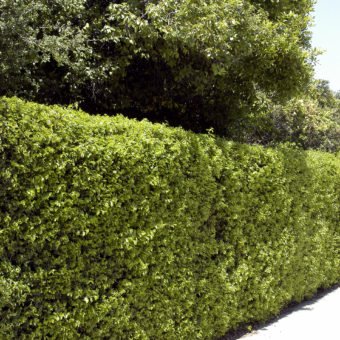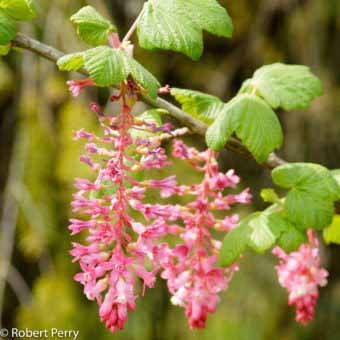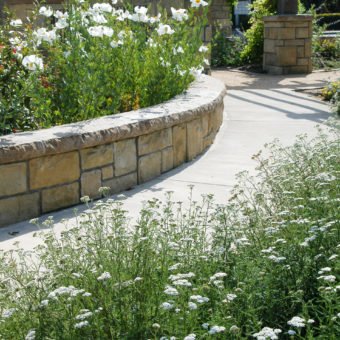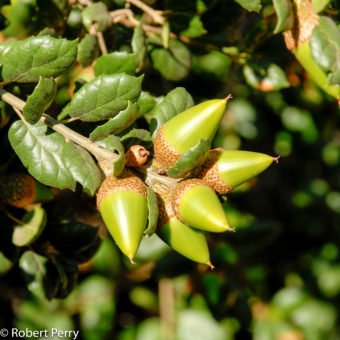A medium to large size native tree that is best known by its dense and highly aromatic foliage. California bay grows in an upright manner, 30-50 ft. tall; dark green leathery leaves grow 1-4 in. long, with smooth margins and a pointed apex. Clusters of tiny pale yellow flowers develop during winter; few olive-like fruit are produced in the spring.
California bay grows in foothills and canyons across the entire length of California and into southern Oregon where it grows in riparian, woodland and chaparral plant communities. It grows to largest sizes near water and can survive as a shrub in drier parts of its range.
As a garden plant, California bay has proven to be highly adaptable to a variety of soil types and climate conditions, and is adapted to partial shade in Inland Empire gardens. It grows best in well-drained soils, shelter from hot afternoon sun exposures and with regular moisture into summer. It is planted as a tall screen, shade tree and can be clipped as a formal hedge. Leaves release pungent oils under high temperatures and when cut or crushed. Small amounts of leaves are sometimes used as a substitute for Laurus nobles, Sweet Bay, in cooking.
